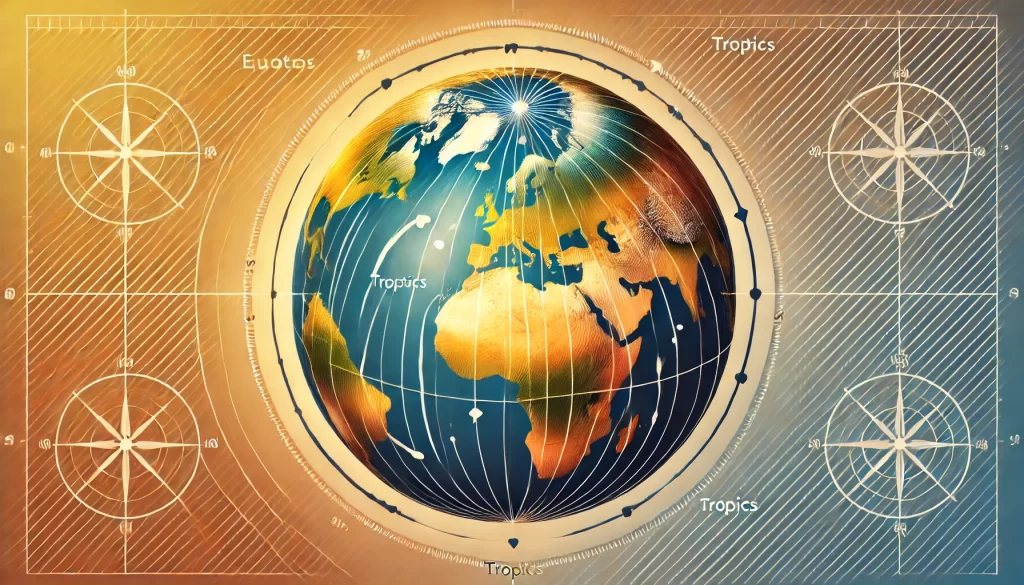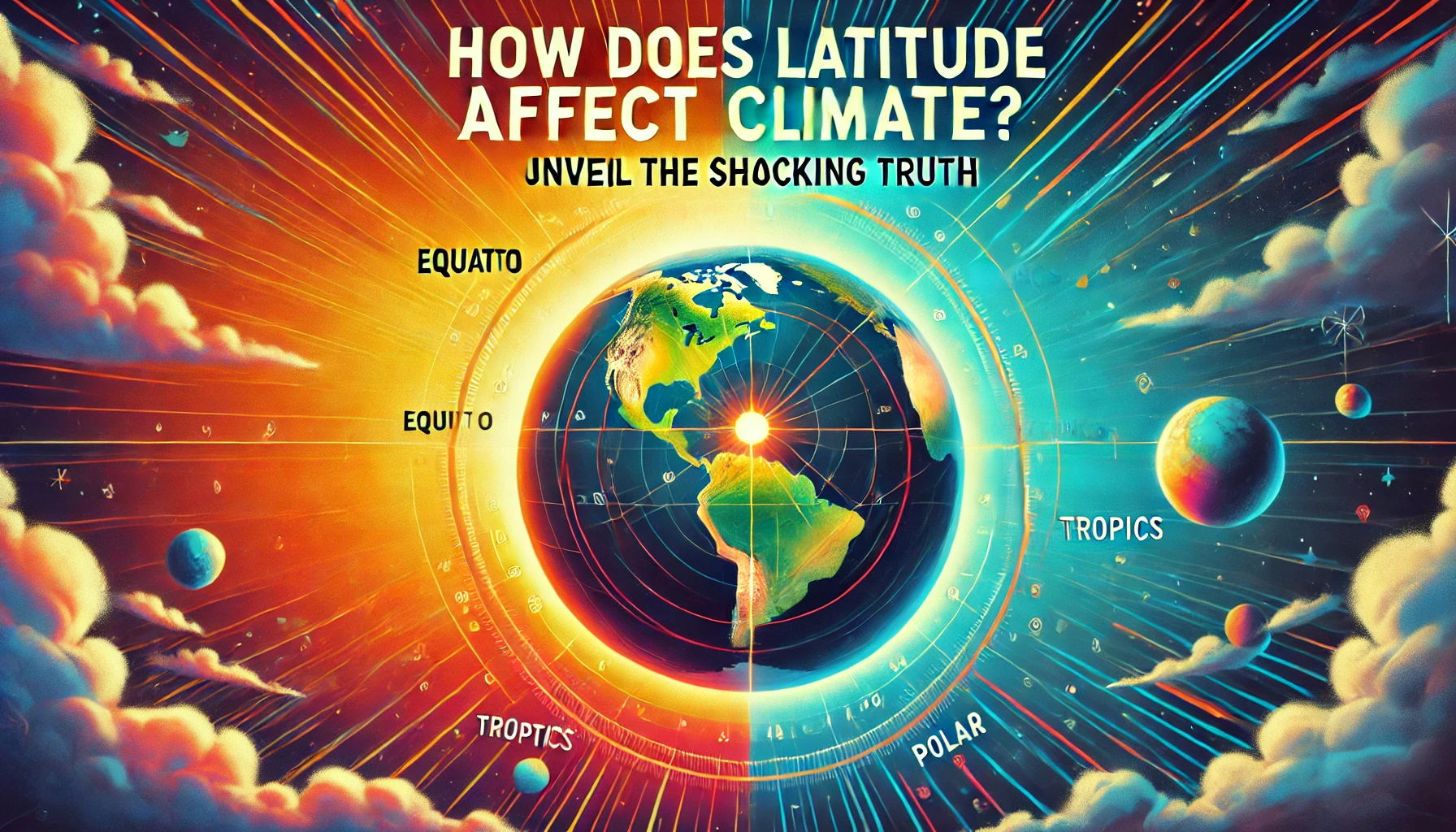Table of Contents
How does latitude affect climate? This question holds the key to understanding why different regions on Earth experience vastly different weather patterns. How does latitude affect climate? Latitude, the distance north or south of the equator, plays a crucial role in shaping the climate of a region. In this article, we will explore the shocking truth behind how latitude affects climate and why it matters to our daily lives. By the end, you will have a clear understanding of how the Earth’s position relative to the sun influences everything from temperature to rainfall.
What is Latitude and How is it Measured?

How does latitude affect climate? It all begins with understanding latitude itself. Latitude is an imaginary line that measures the distance north or south of the equator. The equator is at 0 degrees latitude, while the poles are at 90 degrees north and south. Latitude is measured in degrees, with each degree representing a specific distance from the equator. Understanding latitude is essential to grasp how it affects climate because it determines the angle at which the sun’s rays hit the Earth.
The Relationship Between Latitude and Sunlight

One of the most direct ways latitude affects climate is through the amount of sunlight a region receives. Areas near the equator receive direct sunlight throughout the year, leading to consistently warm temperatures. In contrast, regions closer to the poles experience sunlight at a slant, resulting in cooler temperatures. This difference in sunlight distribution is why tropical regions are warm and polar regions are cold.
Equatorial Regions: A Hot and Humid Climate
In regions close to the equator, the sun’s rays are almost perpendicular to the surface. This direct sunlight means these areas receive more solar energy, leading to higher temperatures. As a result, equatorial regions often have a hot and humid climate. How does latitude affect the climate in these regions? The consistent warmth and moisture are direct outcomes of their proximity to the equator.
Polar Regions: The Cold and Harsh Reality
At the opposite end of the spectrum, polar regions experience the least direct sunlight. The sun’s rays strike these areas at a sharp angle, spreading the energy over a larger area and reducing its intensity. This lack of direct sunlight leads to the extreme cold that characterizes the Arctic and Antarctic regions. How does latitude affect climate in these frigid areas? The answer lies in the minimal sunlight they receive, making these regions some of the coldest on Earth.
Latitude and Seasonal Variations
How does latitude affect climate when it comes to seasonal changes? Latitude not only affects the overall climate of a region but also influences the seasons. The tilt of the Earth’s axis means that different parts of the world receive varying amounts of sunlight throughout the year, causing the seasons to change.
The Tropics: Constant Warmth with Little Seasonal Change
In the tropics, which lie between the Tropic of Cancer and the Tropic of Capricorn, the climate remains relatively stable throughout the year. How does latitude affect climate in the tropics? These regions experience little variation in temperature because they are always close to the sun. While there are wet and dry seasons, the temperature remains warm, making tropical regions some of the most consistent climates on Earth.
Temperate Zones: A Balance of Seasons
Temperate zones, located between the tropics and the polar regions, experience more pronounced seasonal changes. These areas have four distinct seasons: spring, summer, fall, and winter. The amount of sunlight varies throughout the year, leading to warmer summers and colder winters. How does latitude affect climate in these zones? The answer lies in the varying angles of sunlight throughout the year, creating a balance of seasons that we experience.
Polar Zones: Extreme Seasons and the Midnight Sun
In polar zones, the seasons are marked by extreme differences in daylight. During the summer months, these regions experience the phenomenon known as the “midnight sun,” where the sun remains visible for 24 hours a day. Conversely, in winter, polar regions endure long nights with little to no sunlight, leading to frigid temperatures. How does latitude affect climate in these extreme zones? The dramatic seasonal changes are a direct result of their high latitude and the Earth’s tilt.
The Influence of Latitude on Rainfall Patterns
How does latitude affect climate when it comes to rainfall? Latitude also affects rainfall patterns across the globe. The distribution of sunlight influences the movement of air masses and the formation of precipitation. Understanding this connection can help explain why some areas are wet while others are dry.
The Equatorial Rain Belt
Near the equator, the intense heat causes air to rise, leading to the formation of clouds and frequent rainfall. This region, known as the equatorial rain belt, experiences heavy precipitation throughout the year. How does latitude affect climate in these regions? The constant warmth and moisture make these areas ideal for rainforests, which are among the most biodiverse ecosystems on Earth.
Desert Regions: Dry and Arid Climates
As you move away from the equator, particularly around 30 degrees latitude, you’ll find some of the world’s driest deserts. These areas, known as the subtropical high-pressure zones, receive little rainfall due to the descending dry air. How does latitude affect climate in these dry regions? The lack of moisture creates arid climates, making these regions inhospitable for most vegetation.
Also Read: How Much Does Window Tinting Cost? Uncover the Shocking Truth!
Polar Deserts: Cold, Dry, and Windy
Interestingly, polar regions can also be considered deserts, albeit cold ones. Despite their frigid temperatures, these areas receive very little precipitation, mainly because cold air holds less moisture. How does latitude affect climate in these icy deserts? The dry, icy conditions of polar deserts are a result of both their latitude and the unique atmospheric conditions present at the poles.
So, how does latitude affect climate? The shocking truth is that latitude is one of the most significant factors determining the climate of a region. From the warmth of the tropics to the cold of the poles, latitude dictates the amount of sunlight, the seasons, and even the rainfall a region experiences. Understanding this connection helps us appreciate the diversity of climates across the globe and the delicate balance that makes life on Earth possible.
How does latitude affect climate in our everyday lives? Latitude not only shapes the environment but also impacts human activities, agriculture, and ecosystems. As we continue to study climate change and its effects, recognizing the role of latitude will be crucial in predicting future changes and developing strategies to adapt. Remember, the next time you experience a sunny day or a cold winter, latitude is playing a key role in creating that weather pattern.




